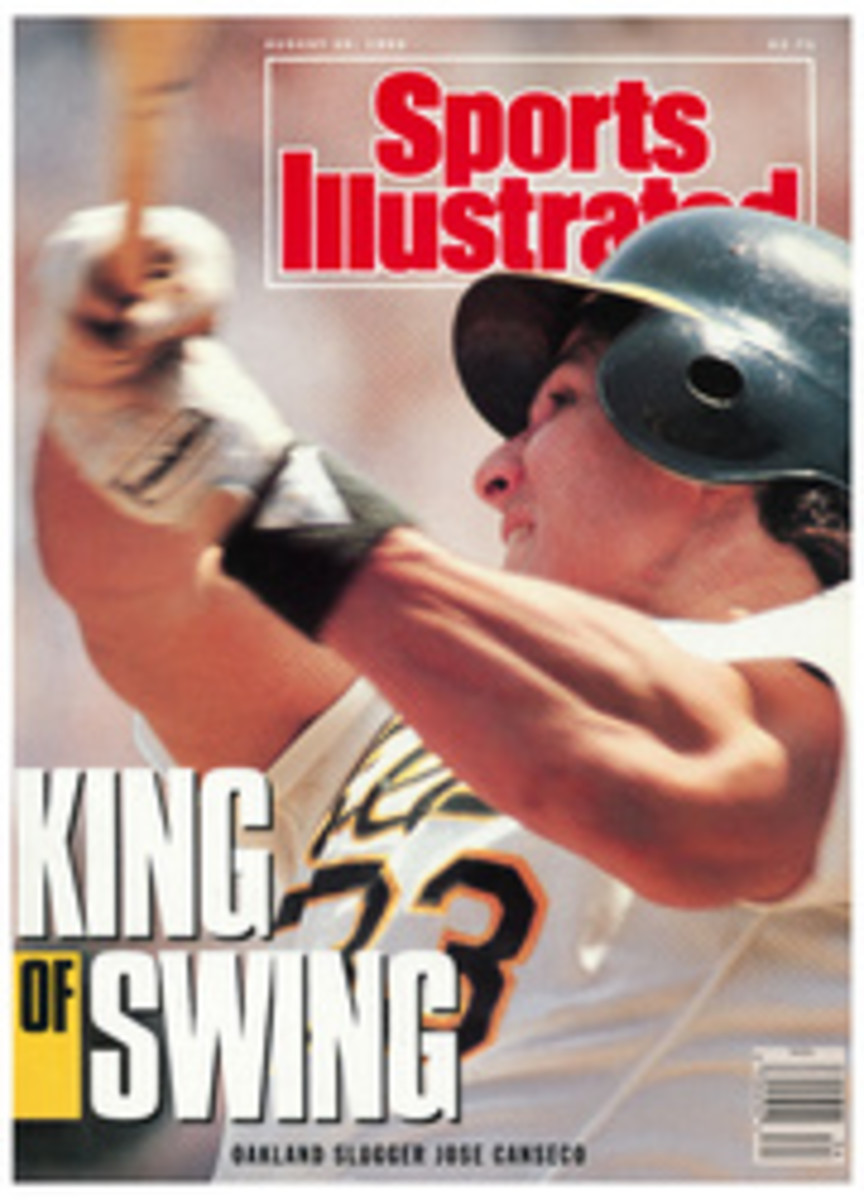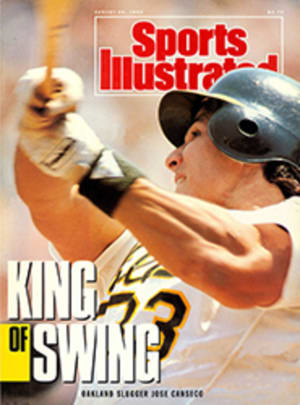
Letters
THE MINORS
It was a pleasure to read the stories in your issue on minor league baseball (Minor Miracle, July 23). As a former minor league general manager (Quad-City Angels, 1985-87), I was reminded of all the thankless duties that go with the job, such as cooking hot dogs before a game, helping the groundskeeper put the tarp on the field during a rainstorm and baby-sitting thousands of youngsters on grade school promotional nights. But I was also reminded that it was all worth it. The players are there to play their hearts out and move up through the system. The general managers are there to provide quality entertainment to draw fans to the ballparks. And the fans are there to enjoy the game. It may be minor league baseball, but it's major league fun.
EDWARD P. McMURRAY
Villa Park, Ill.
Steve Wulf's story on the resurgence of the minor leagues (Down on the Farm, July 23) was interesting but historically incomplete. The story notes that in 1989 minor league baseball attendance reached its highest point since 1952 and that attendance has "come nearly full circle" since that year. However, minor league attendance in 1952 had already declined by 40% from its healthiest year, 1949, when there were 464 teams and attendance was nearly 42 million. Also, the number of cities enjoying minor league baseball in 1989 was fewer than half the number 40 years earlier. By 1952, minor league baseball was a mere shadow of what it had been only three seasons before.
JONATHAN LEIB
Syracuse, N.Y.
A few days after Rochester (N.Y.) Red Wings knuckleballer Daniel Boone was featured in your minor league baseball issue (INSIDE BASEBALL, July 23), he pitched a seven-inning, no-hitter in the second game of a doubleheader to beat the Syracuse Chiefs 2-0.
WILLIAM C. KARPENKO
Holley, N.Y.
Your story on the Toledo Mud Hens mentions that Moses (Fleet) Walker may have been the first black major league player (Sixty Miles from the Show, July 23). Is that Walker in the middle of the back row of the team photo?
KELVIN D. FILER
Compton, Calif.
•Yes. Walker joined Toledo as a catcher in 1883 when the team was Double A and remained with the team the following year when it became a major league franchise. His brother, Welday Wilberforce Walker, an outfielder, also played briefly for Toledo in 1884. Prior to their pro careers, the brothers played on the Oberlin College team.—ED.
IS SOCCER BORING?
William F. Reed's diatribe against soccer in his July 16 POINT AFTER was cute but ignorant. I know of no sport that is "B-O-R-I-N-G," although there are uneducated spectators, among whom Reed must be counted.
It is wholly appropriate to cheer for a 120-point performance by the Celtics and to sigh with regret at the first hit off Roger Clemens in the top of the eighth. There is as much tension in watching Jack Nicklaus line up a nine-foot putt as there is when the 49ers move the ball downfield during a two-minute drill from their own six-yard line.
Reed's preference for professional wrestling over soccer is reflective only of his greater familiarity with the former. If I were he, I would not have announced it in the pages of your magazine.
PETER C. FESSENDEN
Topsham, Maine
TURLEY'S FASTBALL
I read with interest Tim Kurkjian's article on radar guns (INSIDE BASEBALL, July 2), but, with all the talk about fastballs, has everyone forgotten Robert Lee (Bullet Bob) Turley? Turley spent 1954, his first full season in the majors, with Baltimore, where, with his blazing speed, he led the league in strikeouts with 185. At the All-Star break he had an ERA of 2.41. Unfortunately, the Orioles were cursed with some of the weakest bats in history that season. Twice he pitched two-hit games and lost. Still, Turley won 14 games, though his record for '54 was 14-15. The June 25, 1954, issue of Collier's magazine contained an article titled "Turley's Fastball: 94.2 mph." Turley spent the next eight years with the Yankees, where his speed was measured at 95 mph, and he was often compared with Cleveland's fastball pitcher Bob Feller.
MIKE STRAW
Sarasota, Fla.
WIMBLEDON FINALS
Curry Kirkpatrick must have been joking when he wrote that the women's competition provided more "scintillating drama" than the men's at Wimbledon this year (Nine's So Fine, July 16). Certainly that was not the case with the two finals, both of which we watched at courtside. Martina Navratilova's match against Zina Garrison was so one-sided and anti-climactic that it was impossible for the crowd to savor Martina's historic moment. In contrast, during match point in the Boris Becker-Stefan Edberg final, much of the crowd leaped to its feet in uproarious applause even before Becker's service return landed wide. Kirkpatrick's article fails to do justice to Edberg's sparkling, flawless play in the first two sets, his fiery spirit in the final set and the grace of both champions as they embraced at match's end.
DAVID AND GENEVIEVE MAILLARD
Washington, D.C.
BREAKFAST WITH WHOM?
In calling Bud Collins "our guy in the broadcast booth" (POINT AFTER, July 9), Alexander Wolff is able to identify with Collins and his constant rambling in a way that few other viewers can. As a longtime tennis fan, I was pleased to see the new faces of Chris Evert and Jimmy Connors in the NBC booth. The insights that these players, fresh off the tour, are able to offer are much more interesting than Collins's dated anecdotes. Although his Boston Globe columns are often amusing, the same style applied to broadcasting is tiresome. I can appreciate his enjoyment of the game, but hearing him shout, "Net-cord!" every time a serve strikes the tape quickly becomes annoying.
DAVID FISCHER
Washington, D.C.
I disagree with Wolff about Collins. This has nothing to do with whether or not Collins is an expert commentator or a better one than Chris or Jimmy. The essence of good sports broadcasting on TV is knowing when the action should speak for itself. Collins simply doesn't know when to stop talking.
WILLIAM L. COBB JR.
New Canaan, Conn.
D‚Äö√†√∂‚àö¢J‚Äö√†√∂‚àö√ë VIEW
I was intrigued by the DESIGN article about sports eyeglass frames (above, left) in your July 23 issue. Just to show how things come around, consider this drawing of the 16th-century Italian philosopher and physician Hieronymus Capivacceus depicting an early method of securing spectacles: loops of thread around the ears. I'm not sure if Capivacceus was into sports, but if he was, his spectacles should have stayed on.
CHARLES LETOCHA
York, Pa.
PHOTO
PETER READ MILLER
PHOTO
COLLECTION OTTO HALLAUER, MEDICAL HISTORICAL LIBRARY, BERN
Letters to SPORTS ILLUSTRATED should include the name, address and home telephone number of the writer and should be addressed to The Editor, SPORTS ILLUSTRATED, Time & Life Building, Rockefeller Center, New York, N.Y. 10020-1393.

